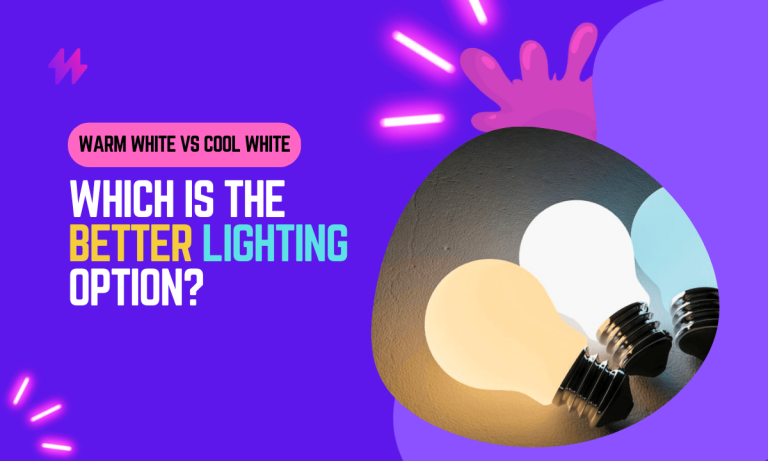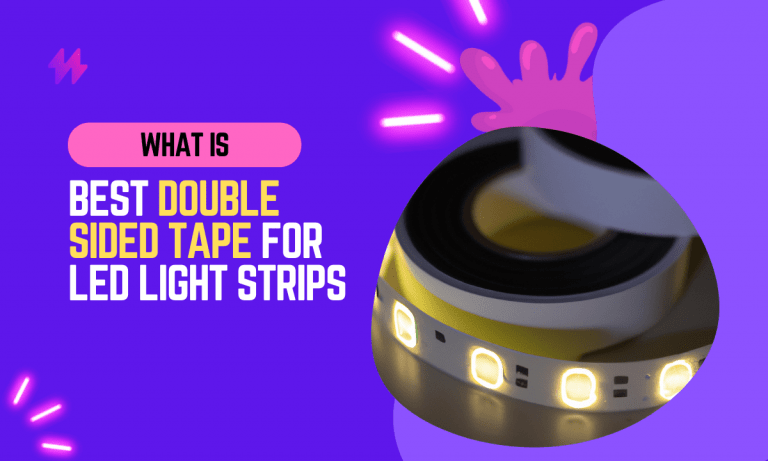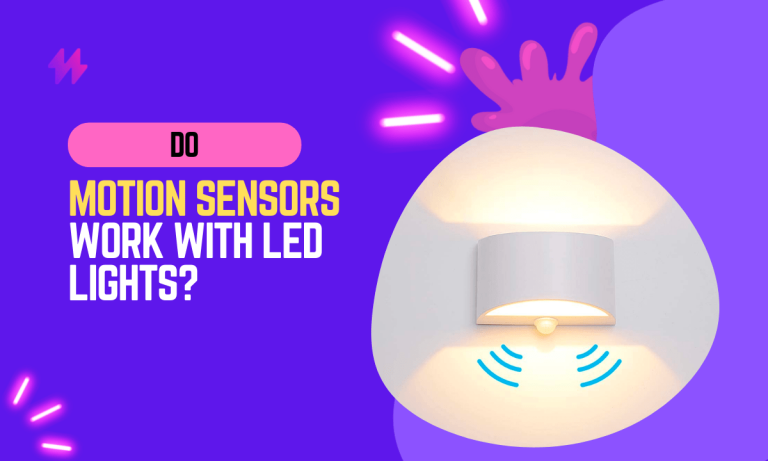How to Choose a Wireless Remote Light Switch In 2023?
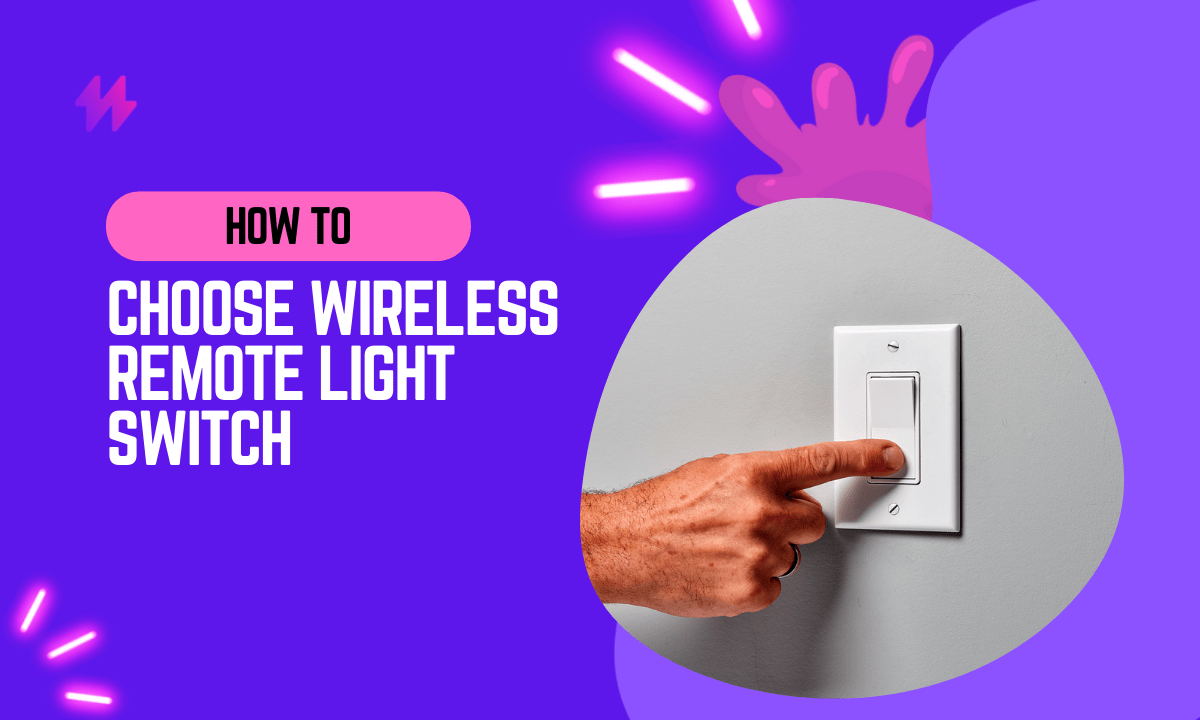
A wireless remote light switch is a great way to make your home smart. With this type of switch, you can control the lights in your home from any room in the house. You don’t even need to be in the same room as the light switch! This can be a great convenience, especially if you have a large home.
There are many different types of wireless remote light switches available on the market. How do you know which one is right for you? In this blog, we’ll discuss how to choose a wireless remote light switch.
Choosing the right wireless remote light switch can greatly enhance your smart home setup. With options like smart dimmer switches and toggle switches available, you’ll find that integrating wireless technology into your home lighting system is easier than ever.
Exploring Options: How to Choose a Wireless Remote Light Switch in 2023
Nowadays, almost every product is available in a wireless version. And light switches are no exception. You can find many types of wireless light switches on the market. Choose the one that best suits your needs.
Also read: How to choose Dimmable LED light strips
When selecting a wireless remote light switch, it’s essential to consider compatibility with your existing smart home devices. Ensuring that your chosen switch supports cutting-edge features like remote control and smart lighting will significantly improve your overall lighting experience.
Considerations for Selecting a Wireless Remote Light Switch: A Comprehensive Guide
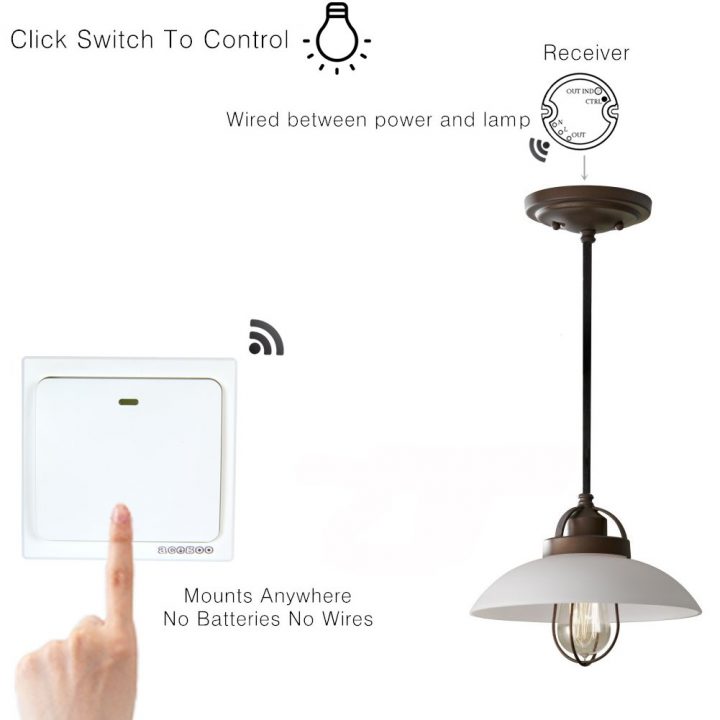
When choosing a wireless remote light switch, there are several factors you need to consider:
When choosing a wireless remote light switch, there are several factors you need to consider: First, assess whether your existing lighting setup can accommodate features that include smart bulbs or dimmer switch kits, ensuring compatibility across your smart home devices. Additionally, look for switches that utilize RF signal technology or a Wi-Fi connection to enhance the integration of your light controls into your home’s network.
- The type of switch: There are two main types of wireless remote light switches: those that use radio frequency (RF) and those that use Bluetooth. RF switches are more common because they have a longer range and don’t require a direct line of sight between the switch and the receiver. Bluetooth switches are less expensive but have a shorter range and require a direct line of sight.
- The number of switches: If you want to control more than one light with your wireless remote, you’ll need to buy a switch that has multiple channels. Most switches have two or three channels, but some have up to eight.
- The range: The range is the distance the signal can travel between the switch and the receiver. The average range for RF switches is about 100 feet, but some models have a range of up to 500 feet. Bluetooth switches have a shorter range, typically about 30 feet.
- Battery life: Remote light switches use batteries to power the transmitter. Some models use disposable batteries, while others have rechargeable batteries. Choose a model with batteries that will last for at least a few months before needing to be replaced or recharged.
- Installation: Some wireless remote light switches can be installed by do-it-yourselfers, while others require the services of an electrician. Choose a model that you feel confident you can install yourself, or hire an electrician to do the job for you.
- Price: Wireless remote light switches range in price from about $20 to $100. Choose the model that fits your budget and your needs.
Understanding How a Remote Wireless Light Switch Functions | Installation and Features
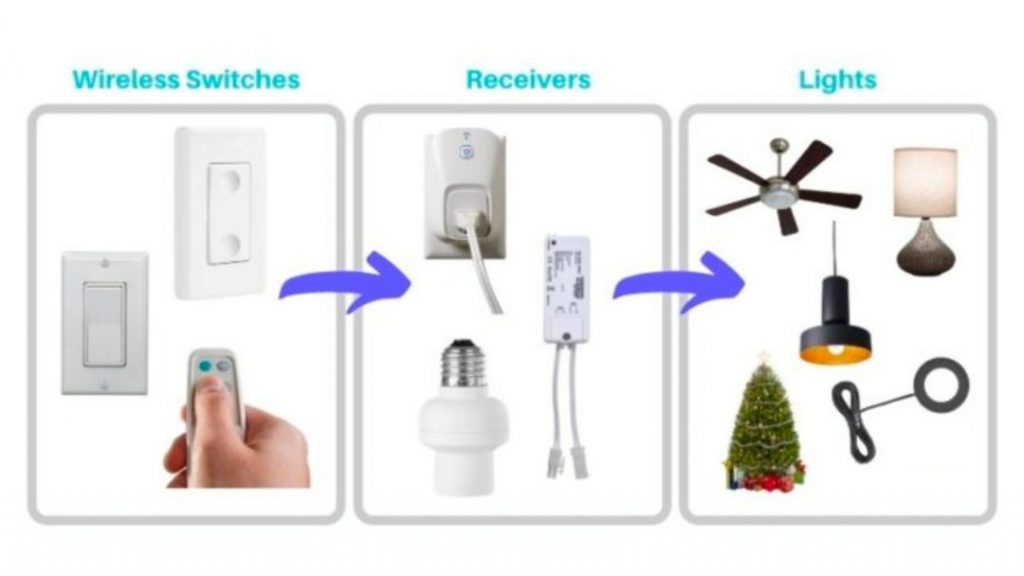
Wireless remote light switches use radio waves to communicate with the receiver. The switch sends a signal to the receiver, which is connected to the light fixture. The receiver then turns the light on or off, depending on the signal it receives.
You may also like: Soft white vs Daylight, which is better for your home?
Wireless remote light switches provide an innovative way to control your home’s lighting using radio frequency signals or Wi-Fi technology. They can be seamlessly integrated into existing electrical systems, allowing for customized control over your light fixtures and smart lights for enhanced convenience. When selecting the right switch, consider compatibility with smart home controllers and various lighting solutions you plan to implement. Understanding what makes smart light switches effective can guide you in choosing the perfect switch for your setup.
How to Install a Wireless Remote Light Switch: A Step-by-Step Guide
Installation of a wireless remote light switch is typically pretty easy. Most models can be installed by do-it-yourselfers in about an hour. However, some models require the services of an electrician.
If you’re installing the switch yourself, follow these steps:
- Turn off the power to the circuit at the breaker box.
- Remove the faceplate from the existing switch and disconnect the wires.
- Connect the wires to the terminals on the wireless switch, following the manufacturer’s instructions.
- Install the batteries in the transmitter.
- Mount the transmitter in a location where it will have a clear line of sight to the receiver.
- Install the receiver near the light fixture.
- Turn on the power to the circuit at the breaker box and test the switch.
If you’re hiring an electrician to install your wireless remote light switch, be sure to give them these instructions.
Must read: How to reset wireless LED light remote
Wireless remote light switches are a great way to make your home smart and convenient. Choose a switch that suits your needs and budget, and enjoy the convenience of being able to control your lights with the push of a button.
Installing a wireless remote light switch enhances your smart home connectivity and allows for personalized control of light fixtures. It’s important to choose the right switch, compatible with your home network and other wireless devices, to ensure effective integration for an optimal lighting experience.
Final Thoughts on Wireless Light Switch Options
In conclusion, selecting a wireless remote light switch in 2023 involves considering a blend of functionality, compatibility, and user-friendliness to enhance the convenience and control of your home lighting system. As technology continues to evolve, the options available in the market can accommodate various needs and preferences. Key factors to consider include the range of control, ease of installation, and the ability to integrate with existing smart home systems. A good wireless remote light switch should provide sufficient range to be effective across your home, ensuring that you can control lighting from different rooms without interference. Additionally, switches that offer features such as dimming capabilities, scene setting, and scheduling options add layers of functionality that can significantly enhance user experience.
Moreover, compatibility with other smart home devices is crucial for those looking to create a cohesive and interconnected home automation system. Choosing a switch that works seamlessly with platforms like Amazon Alexa, Google Home, or Apple HomeKit can greatly extend its utility, allowing for voice control and integration with other smart home functions. The technology should also be future-proof, meaning it should be able to receive updates and support over time to accommodate new features and improvements. With these considerations in mind, consumers can select a wireless remote light switch that not only meets their immediate needs but also adapts to evolving technology trends, providing a valuable, long-term addition to their home’s smart technology suite. This approach ensures both satisfaction and efficiency, making the daily management of home lighting simpler and more enjoyable.
How To Choose A Wireless Remote Light Switch In 2023 | Benefits of Using a Wireless Remote Light Switch
Selecting a wireless remote light switch in 2023 involves understanding the convenience and control these devices offer. A new wireless switch can seamlessly integrate with your existing electrical system, allowing for smart light management through remote controls or even voice commands with Alexa-enabled switches. Many wireless switches are equipped with features like ambient light sensors or motion-sensing technology, enhancing energy efficiency by automatically adjusting based on the environment. Consider how well the switch works with smart light bulbs, such as Philips Hue, and ensure compatibility with your smart home controller for a streamlined experience. The range and signal strength of radio frequency (RF) signals play a crucial role in performance, ensuring that the light switch can adequately control multiple lights throughout your space. For those looking for an attractive switch style, options like touch-screen light switches or battery-operated switches offer aesthetic appeal alongside functionality.
How to Choose a Wireless Remote Light Switch In 2023 | Improved Convenience and Control
Wireless remote light switches offer a modern solution for convenient lighting control in homes. Understanding how to choose a wireless remote light switch in 2023 involves assessing various factors such as installation requirements, compatibility with existing systems, and ease of use. Look for models that feature simple on/off switches, or advanced options like smart dimmers, which allow for customizable lighting schedules. Battery-powered options can eliminate complex wiring problems, while those compatible with smart home systems enable seamless integration with Wi-Fi-connected devices. Whether opting for a single-switch panel or a multi-switch system, the right wireless controller can provide enhanced convenience and control over your lighting.
Safety and control are critical when selecting a wireless remote light switch. Focus on options that utilize robust radio frequency signals to ensure reliable communication between the switch and the fixture. Many modern smart switches eliminate the need for neutral wires, simplifying installation. The choice between a traditional switch and a wireless option will depend on your wiring setup and specific needs. For example, a light switch KS205 may offer advanced features like motion-sensing capabilities or compatibility with smart lights, catering to various preferences for remote-controlled functionality. Evaluate your wiring capabilities, voltage requirements, and the types of fixtures you want to control as you consider your options for a perfect switch.
Enhanced Safety Features
Safety is a top priority when selecting a wireless remote light switch. A good choice features enhanced safety mechanisms like surge protection and low voltage options to prevent overheating. Many modern switches incorporate smart technology to automatically turn off LED lights after a set period, reducing fire risks. Motion-sensing switches also increase safety by ensuring lights turn on only when needed, eliminating dark corners in your home. It’s essential to evaluate how each switch works with existing wiring, whether opting for battery-powered switches or smart Wi-Fi-connected options that require a more intricate installation.
Choosing a switch with enhanced safety features helps prevent electrical mishaps. For example, a three-way switch setup can provide control over lighting from multiple points, reducing the chance of accidents in hallways or staircases. Furthermore, switches designed for smart home compatibility allow for smoother integration with smart light dimmers or traditional light switches. With the addition of features like a built-in wireless receiver, the latest models optimize both convenience and safety. Investing in quality light switch accessories can also help in maintaining a safe environment, ensuring that your lighting solutions serve both function and protection effectively.
Key Features to Look for in Wireless Remote Light Switches
Selecting a wireless remote light switch in 2023 involves considering several key features that enhance both functionality and convenience. Smart light switches and remote-controlled switches offer improved control over your lighting setup, with options like a three-way switch or a four-way switch providing versatile configurations. Compatibility with smart home systems is crucial, ensuring that devices like the wi-fi-connected switch work seamlessly with platforms like smart wi-fi bridges. Signal strength and range are essential as well, especially in larger homes where a single switch might not suffice. Some users may prefer a basic on/off switch, while others might opt for non-dimmer switches or smart dimmer lights for specific fixtures. Look for features like built-in light fixtures or wall-mounted switches that can integrate into your current switch setup. Understanding how different wireless options, such as the toggle switch style and the pico dimmer remote, can interact with traditional switches will ensure you choose a solution that fits your needs effectively.
Compatibility with Smart Home Systems
Smart home integration is crucial for enhancing the functionality of a wireless remote light switch. Understanding how to choose a wireless remote light switch in 2023 involves assessing compatibility with existing systems. Many light switch makers offer options like wi-fi switches and z-wave switches that enable seamless integration. A good smart light can easily connect to a wi-fi/bridge connection, making it possible for multiple switches, such as a two-switch panel or a three-switch panel, to control various fixtures and lights in your home. This capability transforms traditional dumb switches and wired connections into an interconnected smart system.
The effectiveness of a new switch often hinges on its ability to work with other smart devices. Some modern switches operate as a receiver/wireless controller, allowing functionalities such as remote wireless switching and smart motion detection. Options like a single-pole switch or a wireless dimmer switch can allow control from anywhere in the house. Homeowners can take advantage of smart wifi motion capabilities to automate lighting for convenience and energy savings. Selecting a quality wall switch module designed for recessed lighting or hue lights ensures compatibility while providing a reliable power source and maintaining the performance of older electrical systems.
Range and Signal Strength Considerations
Range and signal strength are crucial factors in determining how to choose a wireless remote light switch in 2023. A typical switch that operates well should have a robust radio signal to ensure consistent communication with the light fixtures. For instance, a four-switch panel offering multiple control options should maintain a strong connection to control single light fixtures. Considering how a cheap switch can compromise range, investing in a quality product allows for seamless operation, whether it be a wi-fi-connected switch or a conventional wired switch.
Signal strength can also be affected by the layout of your home and the placement of the electrical box. If you’re using a no-neutral switch or a satellite switch system, it’s essential to evaluate how well the light switch works across various distances. Wireless switches, like the switch ks200m or an in-wall switch, often need to communicate effectively with their corresponding on-and-off switch. For those with three-way or regular switches, ensuring the right wiring is in place can significantly enhance functionality, preventing issues commonly experienced with old switches or second switches in the setup.
Common Brands and Models in 2023
As consumers explore how to choose a wireless remote light switch in 2023, many brands and models have emerged as popular choices. Options range from wi-fi-connected switches that integrate seamlessly with smart home systems to more traditional nightlight fixtures. Some models successfully replicate the functionality of wired switches, making them ideal alternatives for those looking to replace conventional wiring. Many also offer features like three-way switches, allowing control from multiple locations. Understanding how these light switches work helps consumers select the right product tailored to their specific needs.
Popular Choices for Wireless Remote Light Switches
Many users are opting for well-reviewed models that feature easy installation and compatibility with various smart home ecosystems. A popular choice is the Wi-Fi-connected switch works seamlessly with existing fixtures or lights, allowing control from mobile devices or voice assistants. These models typically include both manual operation through a physical switch and remote access, providing users flexible options for managing their lighting.
Some brands stand out for their reliability and innovative features while keeping affordability in mind. While exploring how to choose a wireless remote light switch in 2023, considerations such as user reviews, warranty, and customer support become essential. Choosing a switch that offers an intuitive app interface enhances the overall experience and simplifies the integration process with other smart devices.
Comparisons of Features and Prices
Evaluating the features and prices of wireless remote light switches is essential for making an informed choice. How to Choose a Wireless Remote Light Switch In 2023 involves analyzing aspects such as ease of installation, battery life, and compatibility with different fixtures or lights. Many options are available, ranging from basic models to advanced systems with smart home integration, each impacting the price and overall value.
Price ranges can vary significantly based on brand reputation and included features. While budget-friendly models may suffice for standard use, investing in higher-end switches could provide enhanced functionality and durability. Understanding How to Choose a Wireless Remote Light Switch In 2023 means weighing these factors against your needs and preferences, ensuring you select a product that offers the best balance of performance and cost.
Troubleshooting Wireless Remote Light Switch Issues
Wireless remote light switches can occasionally encounter issues that may hinder their performance. Common problems include loss of connectivity, where the switch fails to communicate with the light fixture, or unresponsive buttons on the remote. Sometimes, the problem lies in the installation or compatibility with existing electrical systems. Understanding how to choose a wireless remote light switch in 2023 involves knowing what features can aid in troubleshooting, such as signal strength or battery life indicators. Ensuring the switch is properly paired with the light fixture can also resolve many issues, making it crucial to address these concerns promptly to maintain optimal convenience and control in your space.
Common Problems and Solutions
Wireless remote light switches can experience connectivity issues, often linked to their range or interference from other devices. For instance, if the remote struggles to control a fixture/light, it may be due to the switch being placed too far from the receiver. Before deciding on a model, it’s essential to know how to choose a wireless remote light switch in 2023 that offers optimal signal strength. Conducting a range test in the intended installation area can help prevent such connectivity problems.
Another common issue is battery life. If a remote light switch frequently needs new batteries, it can become frustrating. Choosing a wireless remote light switch in 2023 with energy-efficient features or a long-lasting battery design can alleviate this problem. Regular maintenance, such as checking the battery and ensuring the fixture/light is properly connected, can also help maintain functionality and prevent unexpected failures.
When to Seek Professional Help
Certain situations may arise where seeking professional help is essential for resolving issues with your wireless remote light switch. If you’ve followed the guidelines on how to choose a wireless remote light switch in 2023 but still experience persistent problems, a qualified electrician can diagnose electrical faults that are beyond basic troubleshooting. This can prevent potential hazards and ensure that your home’s electrical system operates safely and efficiently.
Complex installations or integrations with smart home systems may also necessitate professional assistance. Understanding how to choose a wireless remote light switch in 2023 involves considering various factors, such as compatibility and signal strength. If the installation seems daunting or you encounter technical issues, enlisting the expertise of a professional can save time and provide peace of mind in achieving the desired functionality.
Conclusion
Selecting the right wireless remote light switch involves understanding how to choose a wireless remote light switch in 2023 based on your specific needs. Improved convenience and control are significant factors that enhance the user experience, allowing for seamless operation of light fixtures. Safety features also play an important role in ensuring that your lighting solutions are reliable. As you evaluate options, consider compatibility with smart home systems, range, and signal strength to ensure optimal performance in your home. The right choice will ultimately lead to greater comfort and efficiency in managing your lighting environment.

